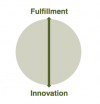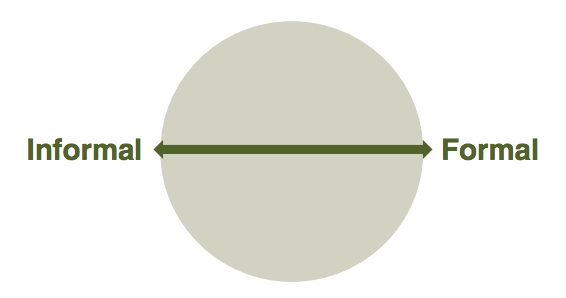93% of CEOs see sustainability as key to business success. Here, NBS presents a comprehensive framework to embed sustainability into organizational culture.
A Framework for Embedding Sustainability into Corporate Culture
How can practitioners build and support an organizational culture of sustainability? With direction from the Leadership Council, NBS reviewed 15 years of research and 179 studies to answer that question.
In Embedding Sustainability in Organizational Culture: A Systematic Review of the Body of Knowledge, Dr. Stephanie Bertels, Lisa Papania, and Daniel Papania present their research on how firms go about making sustainability an everyday, enduring part of their organizations.
The report provides a framework for practitioners to evaluate their sustainability efforts. The framework groups 59 distinct practices into four quadrants based on both the intended outcome and approach.
What is a culture of sustainability?
To define “culture of sustainability,” it’s helpful to start with an understanding of sustainability. The most frequently cited definition of sustainability comes from the World Council on Economic Development. It advocates operating in ways that “meet the needs of the present without compromising the ability of future generations to meet their own needs.” In practice, business sustainability is often associated with managing the ‘Triple Bottom Line.’
Yet, business sustainability means more than accounting for environmental and social impacts in corporate reporting. Bertels, L. Papania, and D. Papania view sustainability as a goal rather than as an end point Sustainability is something many companies strive toward. Sustainable businesses survive over the long term because they are intimately connected to healthy economic, social, and environmental systems. A key component of this journey involves embedding sustainability into organizational culture.
Like sustainability, organizational culture is also defined in many different ways. Academic definitions make reference to shared assumptions and values as well as expected behaviours and symbols. An organization’s culture guides the decisions of its members by establishing and reinforcing expectations about what is valued and how things should be done. For this reason, culture is often described as ‘the way we do things around here.’ Over time, an organization builds up its own culture, providing a sense of identity to its members about ‘who we are’ and ‘what we do.’
For the purposes of this report, a culture of sustainability is one in which organizational members hold shared assumptions and beliefs about the importance of balancing economic efficiency, social equity, and environmental accountability. Organizations with strong cultures of sustainability strive to support a healthy environment and improve the lives of others while continuing to operate successfully over the long term.
Intended Outcomes & Approaches
Intent: What are you trying to accomplish?

Researchers found that practices appeared to target two different sustainability goals: fulfillment and innovation. On the path to sustainability, organizations often face tensions between meeting existing sustainability commitments (fulfillment) and making way for changes that will help them improve their sustainability performance in the long run (innovation). These two goals form the vertical axis of the framework.
Approach: How are you going about it?

Practices were also grouped into two different approaches to meeting goals: informal and formal. There is an ongoing interplay between these two approaches and both impact culture. Managers should be aware of the existence and impact of both ‘soft’ and ‘hard’ approaches to building culture.
A Portfolio Approach to Embedding Sustainability
Using the two dimensions outlined above, the framework can be divided into four key quadrants. Each quadrant contains categories of practices that can be deployed to embed sustainability into corporate culture.
Informal practices aimed at fulfillment fall into the ‘fostering commitment’ quadrant. Formal practices aimed at fulfillment are about ‘clarifying expectations.’ Informal practices aimed at innovation relate to ‘building momentum for change.’ Finally, formal practices directed at innovation fall into the ‘instilling capacity for change’ quadrant.
The researchers propose that organizations draw from all four quadrants in their efforts to embed sustainability. Similar to the need to consume food from each of the four food groups, they speculate that a balanced approach is required.
For further information on the quadrants, their associated categories, and practices, download the full systematic review.
Who Should Read the Report
The report is targeted at organizations that have made strategic choices to pursue sustainability and, in the process, have identified a need to strengthen their organization’s sustainability culture.
Executives, senior HR managers, and senior sustainability professionals with a vested interest in having sustainability be core to their organization’s success can use this report to identify ways to develop their sustainability culture.
How to Use this Report
Conduct a gap assessment of your current sustainability culture.
Scan the practices in the four quadrants and ask yourself: to what extent do we make use of this particular practice? It may be useful to reflect on which practices you currently employ the most and those you use less frequently or do not use at all. Think about why this may be the case. Do you rely more heavily on practices in one quadrant than the others? Are there quadrants where you do not make use of many practices at all?
Use the framework as planning tool for implementation of a particular program or initiative.
Again, with a particular goal or initiative in mind, you can scan the practices in the four quadrants and select a diversified sub-set of practices that are best suited to helping you implement this particular program or initiative. In doing so, ensure that you select practices from each of the four quadrants and try to select some practices that have already received empirical support.



Add a Comment
This site uses User Verification plugin to reduce spam. See how your comment data is processed.This site uses User Verification plugin to reduce spam. See how your comment data is processed.